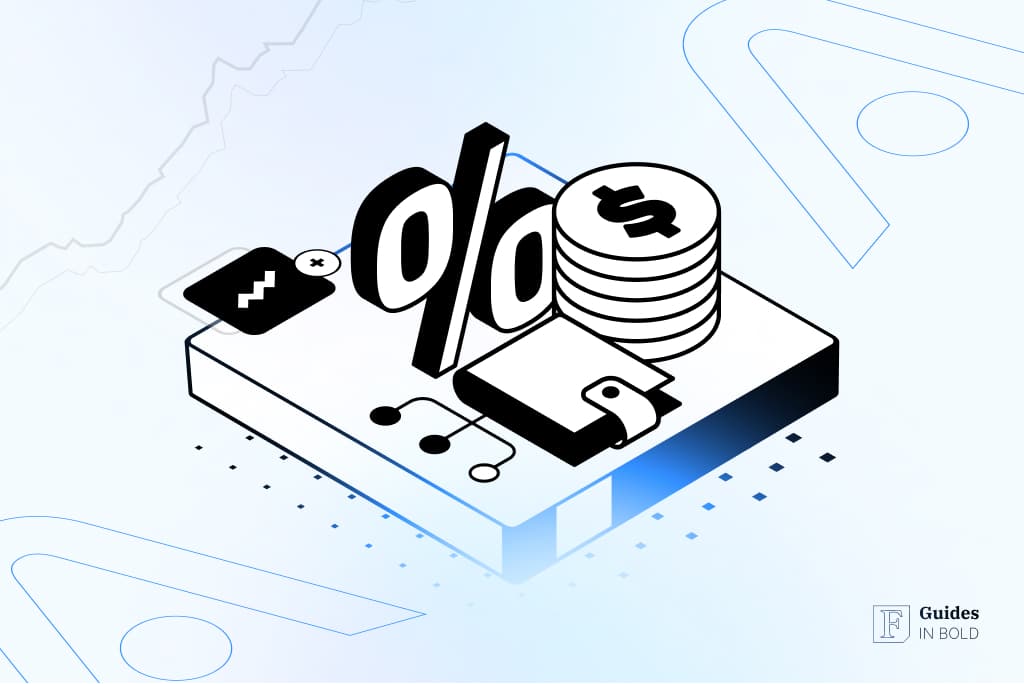This guide will take you through the process of staking cryptocurrency on Atomic Wallet, covering which crypto assets are eligible to stake, the rewards available and how to claim them. Additionally, there are step-by-step instructions on how to stake and unstake safely, as well as an overview of the feature’s benefits and drawbacks.
About Atomic Wallet
With more individuals seeking alternatives to conventional means of acquiring, storing, and staking cryptos, Atomic Wallet has witnessed increased demand globally.
To learn more about the wallet itself, including its various features to buy, exchange, and earn, check out our in-depth Atomic Wallet review.
What is staking crypto?
A crypto transaction is generally confirmed for it to be recorded on the blockchain, and validation ensures that the transaction proceeds without any erroneous data.
Therefore, for transactions to be verified, they must either be authorized and added to a block by miners in Proof-of-Work blockchains, such as Bitcoin, or validators must approve them in Proof-of-Stake (PoS) blockchains.
In the case of Proof-of-Stake, you may stake your coins and earn rewards for transaction validation. As the difficulty of mining has increased, staking has become more appealing to crypto investors.
Why do users stake crypto on Atomic Wallet?
By staking your cryptocurrency in Atomic Wallet, you select Atomic as your validator. Atomic allows any cryptocurrency holder to earn regular payouts in a completely decentralized manner as Atomic doesn’t collect any fees; instead, you get a profit directly from validators.
The act of delegating your cryptocurrency to a validator of your choosing communicates your trust in them, which increases the strength of the blockchain. Validators are compensated for validating blockchain transactions; so they repay individuals who support them; this is how you earn your rewards.
Staking may be divided into two categories:
- Centralized staking;
- Decentralized staking.
Since there is no central authority responsible for holding your coins or private keys to your wallet, staking with Atomic Wallet is termed decentralized staking as rewards are deposited or claimed into your own wallet.
Conversely, centralized staking happens outside of your own wallet, most typically on an exchange platform, and is defined as follows: The exchange platform will be responsible for keeping your crypto safe during staking, and any rewards you get will be deposited into your exchange account rather than your personal wallet.
Staking with Atomic is essentially three simple steps:
- Stake coins to the validator;
- The validator creates blocks;
- You receive rewards.
Staking crypto
Using Atomic Wallet’s decentralized staking feature, you may stake your crypto assets without paying any fees to Atomic, and you can receive rewards directly from the validators themselves.
Users simply choose the cryptocurrencies that they would like to stake and then are able to enjoy the benefits of decentralized zero-fee staking.

In contrast to other exchanges and wallets, Atomic also gives you the freedom to unstake your assets anytime you choose while still reaping the benefits.
The following are some of the advantages of staking using Atomic:
- Choose a Validator: Delegate your cash directly to verified validators without having to pay any fees in the process;
- Rewards: Stake up to 13 cryptocurrencies (more to be added) with annual percentage rates (APR) ranging from 5% to 23% to gain rewards;
- No limits: There are no Know Your Customer requirements, and you have the choice of deciding how much money you wish to stake;
- Unstake crypto anytime: Users can unstake their crypto assets when they want;
- 24/7 support: Live chat and email support are accessible around the clock, seven days a week for Atomic customers.
The result is that Atomic makes it possible for every cryptocurrency holder to receive regular rewards in a truly decentralized way, earning passive income by staking cryptocurrency via the wallet.
To ensure that users are informed of all they need to know before staking their coins; we’ve given a thorough overview of all of the supported assets below.
Supported assets
Earnings are computed depending on the amount you stake, and the coins that have been staked remain in your address. All cryptocurrencies do not support staking on the platform; nevertheless, it is supported by up to 13 popular POS coins.
- Solana (SOL)
- Zilliqa (ZIL)
- Cardano (ADA)
- Atomic Wallet Token (AWC)
- Icon (ICX)
- BAND Protocol (BAND)
- Cosmos (ATOM)
- Tezos (XTZ)
- Tron (TRX)
- NEO (NEO)
- Komodo (KMD)
- Algorand (ALGO)
- Vechain (VET) & VTHO
As listed above, users may also stake Atomic Wallet Token (AWC) on the wallet and receive the highest annual percentage yield (APY) of more than 20% in return. Atomic Wallet uses AWC as its internal currency, and clients who own the AWC-BEP2 earn rewards for utilizing the wallet’s built-in exchange function.

The rewards for each currency or token are unique; some cryptocurrencies compensate users for staking more than others. Some assets may demand a minimum staking quantity, as well as offer a different time frame from which you may expect to start earning rewards than others.
Staking fees
A dedicated staking address is generated for you when you elect to stake your cryptocurrency for the first time. A unique address is produced for each crypto that you want to stake; the separate address still belongs to you and can still be accessed using your private keys.
Since you’re creating a transaction every time you stake your cryptocurrency, and this transaction is transferring some portion of your funds to this specific staking address, a network fee is collected from you. The network fee is used to reward the miners engaged in the transaction.
Each time you claim your rewards for your chosen crypto, a network fee will be charged to you. The fees are charged directly by the specific blockchain to which you have staked; Atomic does not impose any extra costs on top of that.
Staking crypto on Atomic Wallet (step-by-step)
Step 1: Navigate to the left side and click on the [Staking] tab.

Step 2: Select the cryptocurrency from the 13 available you’d like to stake.

Step 3: We have chosen Cosmos (ATOM) for this guide, but the process is more or less the same with other coins and tokens. After selecting ATOM, click [Stake]
Note

Step 4: Choose the amount of the token you wish to stake. Here you will also see the network fee and yearly yield.

Step 5: Look through the list of validators that are accessible and choose one. Once you’ve made your selection, click on the [Stake] button.

Step 6: Your ATOM deposit has now been staked, so you can wait for your first rewards to come. You can trace your staking transaction on the block explorer by clicking on the hash of your transaction.

Step 7: With ATOM, you’ll have to go through the process of manually claiming your staking rewards. The blockchain will charge you a network fee for claiming since it is a normal transaction on the blockchain, and you will be charged this fee every time you claim. The fee will be deducted from your accessible balance rather than your staking deposit.

To claim your rewards, just click on the [Claim] button. Once there are any rewards available, the button will become highlighted.
Note
Step 8: Instead of staking, you can unstake by clicking on [Unstake] after choosing the amount you want to remove from the address.

Step 9: Immediately after you click the [Confirm] option, your deposit will be locked for an additional 21 days. After the unstaking time has expired, your coins will be put into your account at the address you provided. No interest will be earned on your ATOM investment during the waiting time.

Note
Watch the video: Cosmos (ATOM) Staking Guide
Atomic Wallet Security
As opposed to storing and encrypting your private keys on a centralized exchange, a non-custodial wallet will do it directly on your device. Consequently, the chance of your wallet being hacked is reduced, and you have total control over your funds and transactions on Atomic Wallet as a result.
Atomic is one of the safest cryptocurrency wallets available, offering users wallet encryption using AES (Advanced Encryption Standard) and TLS (Transport Layer Security), as well as anonymity, decentralization, and high-level security.
Note
Pros & Cons of staking on Atomic Wallet

Pros
- Trusted by 3 million users worldwide;
- A secured, decentralized, and anonymous wallet to stake your crypto assets and earn rewards in one place;
- Stake your crypto without any fees and receive rewards directly from verified validators;
- No stakings limits;
- No KYC;
- The ability to unstake your assets at anytime.

Cons
- There are only 13 coins and tokens available for staking at the moment although more are planned to be added in the future.
Final thoughts
In conclusion, Atomic Wallet offers investors a secure and easy method of staking their cryptocurrency holdings while collecting rewards. Not only do users have the luxury of staking up to 13 cryptocurrencies, but they also have the ability to unstake them anytime they want in contrast to other wallets and exchanges.
There are approximately 500 cryptocurrencies supported on the site, with up to 13 coins accessible for staking at any one time.
The platform enables users to make passive income from their digital assets while also providing them with the flexibility to swap their tokens whenever they choose to do so. Users may delegate their crypto directly to verified validators without paying any fees, and the quantity of funds they choose is completely limitless and does not require any KYC.
Aside from that, if users encounter any problems when staking or unstaking their coins, they may contact Atomic Wallet’s 24-hour customer support staff.
All in all, for those interested in staking but aren’t sure where to begin, Atomic Wallet offers an easy starting point into the world of staking and is recommendable for anybody who wants to start earning more rewards with their assets.
Disclaimer: The content on this site should not be considered investment advice. Investing is speculative. When investing, your capital is at risk.
FAQs about staking on Atomic Wallet
What cryptos can you stake on Atomic Wallet?
There are up to thirteen cryptocurrencies available for staking on Atomic, including Cardano (ADA), Solana (SOL), Polkadot (DOT), and Atomic Wallet Token (AWC) with more tokens and coins planned to be added in the near future.
What are the rewards for staking on Atomic Wallet?
The yearly yield rewards for staking depend on the crypto coin or token in question, some cryptocurrencies will have a minimum staking amount, but there is no limit.
Is staking on Atomic Wallet safe?
Yes, Atomic takes great care to only provide reputable and highly dependable validators for staking in Atomic Wallet, ensuring that your assets are kept secure.
How often are staking rewards on Atomic Wallet?
This depends entirely on the cryptocurrency which has been staked; some, such as Atomic Wallet Token (AWC), are weekly and are deposited automatically, while others you will need to claim and could be rewarded each month.




